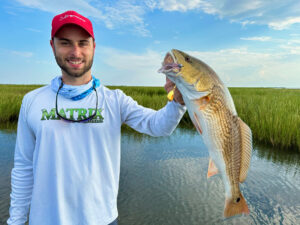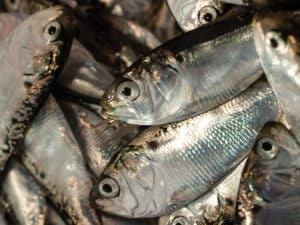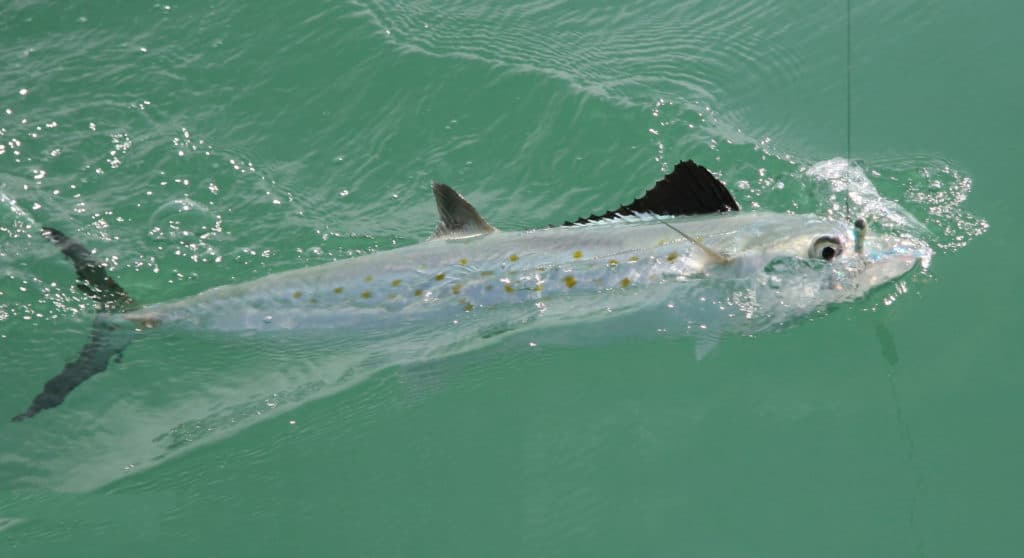
Growing up in Virginia Beach, I spent many summer days trolling small spoons a few miles off the beach for fast action on speedy Spanish mackerel. But this summer, it hit me: After 30 years targeting these silver conquistadors, my Spanish tactics hadn’t changed. To gather new intel, I asked four regional experts—from the mid-Atlantic to the Gulf of Mexico—to share their strategies.
Troll Patrol
Fortunately, Virginia Beach hosts a dedicated fleet of charter captains who spend every day fishing just offshore of this tourist town’s oceanfront high rises. I dropped a line to old friend Capt. Nolan Agner and he hooked me up to fish with Capt. Luke Jennings and mate Fisher Terry on the 40-foot deadrise workboat Smack Down.
We left the dock at a leisurely 7 a.m. As soon as the big boat chugged out Rudee Inlet, Jennings turned north and pushed the throttles to 6 knots. Terry grabbed a half-dozen 20-pound-class boat rods spooled with 50-pound braided line. At the end of the mainline, he tied a 250-pound snap swivel.
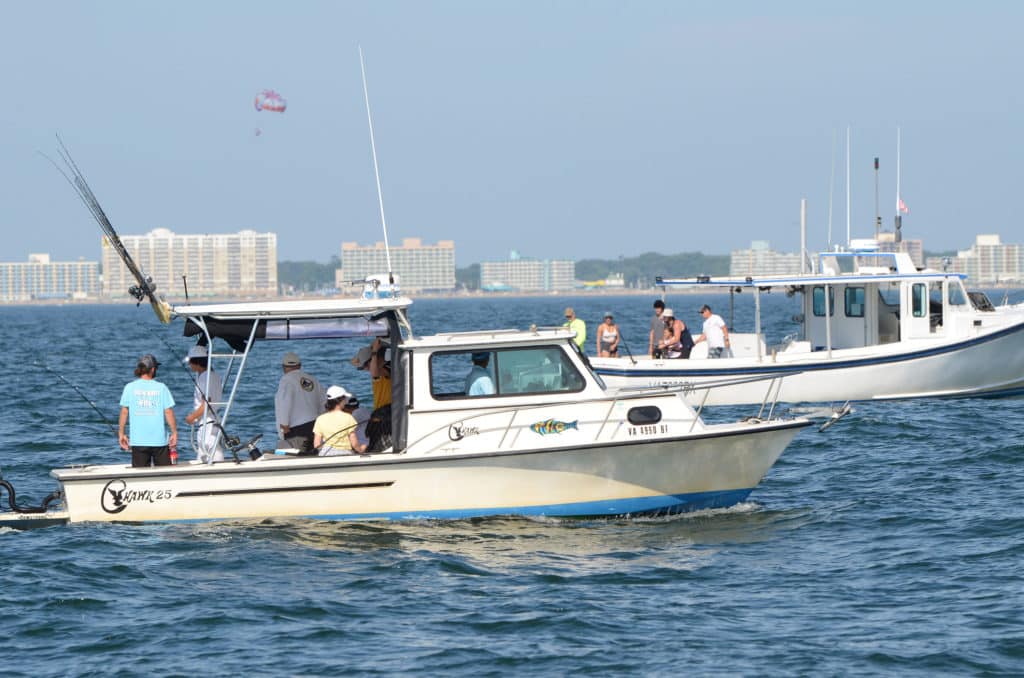
To vary the depth of his lures, Terry attached 3- and 4-ounce trolling sinkers to two rods and No. 1 planers to another two. To the other end of the sinker or planer, Terry clipped another 250-pound snap swivel with 10-feet of 40-pound leader, a 150-pound-test swivel and 10 more feet of 40-pound leader. The long leader ended with a size 00 to size 1 Clark Spoon Squid. “Green is my favorite color,” Terry added, showing me a green-glitter metal lure the size of a minnow.
From the fifth rod, Terry pulled a small bird teaser with a 20-foot leader terminated by another small, green spoon. Terry had rigged the bird on a 16-inch piece of 100-pound mono with a couple large beads on either side and a 250-pound snap swivel at each end of the short leader.
The bird allows Terry to add another rod to the spread without tangling his deeper lures. While the bird doesn’t result in many bites, the teaser slapping and splashing on the surface attracts fish to other lures in the spread.
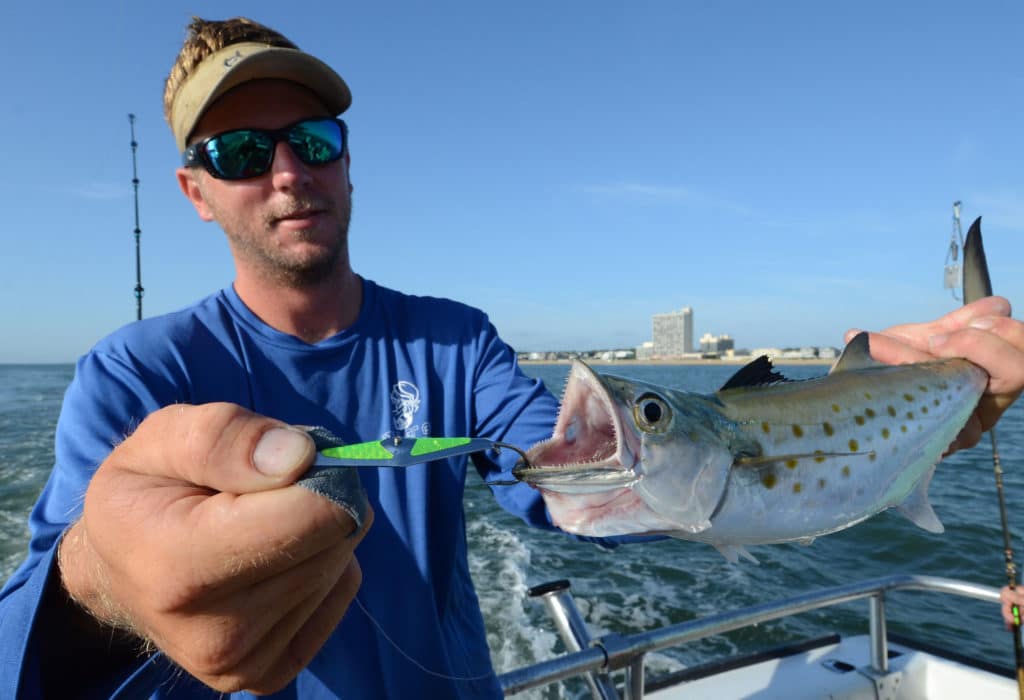
Capt. Jennings motored along the beach while I watched the early joggers and dog walkers strolling the boardwalk. We often catch Spanish within a quarter-mile of the surf line, especially in the early morning and late evening. We made a circle past the mouth of the inlet, where several other boats had started their day. Temperature breaks and current lines also hold Spanish as do live bottom and bait schools.
Within just a few minutes, one of the planer rods bounced heavily with the weight of a mackerel. Terry coached the angler to reel faster or slower, depending on how the fish surfaced or dived. Jennings slowed the boat while the rest of the crew held their breath, hoping the first fish of the day would not escape to freedom.
Once the planer reached the rod tip, Terry handlined the fish the last few feet before swinging it over the transom and into the box. Jennings bumped the boat back to trolling speed. Before long, the crew was heckling and shouting encouragement as the anglers reeled in one Spanish after another.
Unsung Heroes
While trolling spoons can be a quick and easy way to have fun, the most exciting tactic for catching Spanish involves casting lures. When the fish fire up and actively feed on schools of bait, I grab a light-action spinning rod and small spoon or jerkbait.
But catching Spanish with light tackle can be tough: The speedy fish have sharp eyesight and finicky tastes. I often encounter feeding Spanish that I can’t convince to eat a lure.
Capt. Jim Klopfer, who charters near Sarasota, Florida, considers Spanish mackerel an unsung hero of nearshore fishing. He targets them with light spinning or fly-fishing tackle. “They’re aggressive, fight hard and are one of the fastest fish in the sea,” he says. The green, silver and gold speedsters also taste great when prepared fresh.
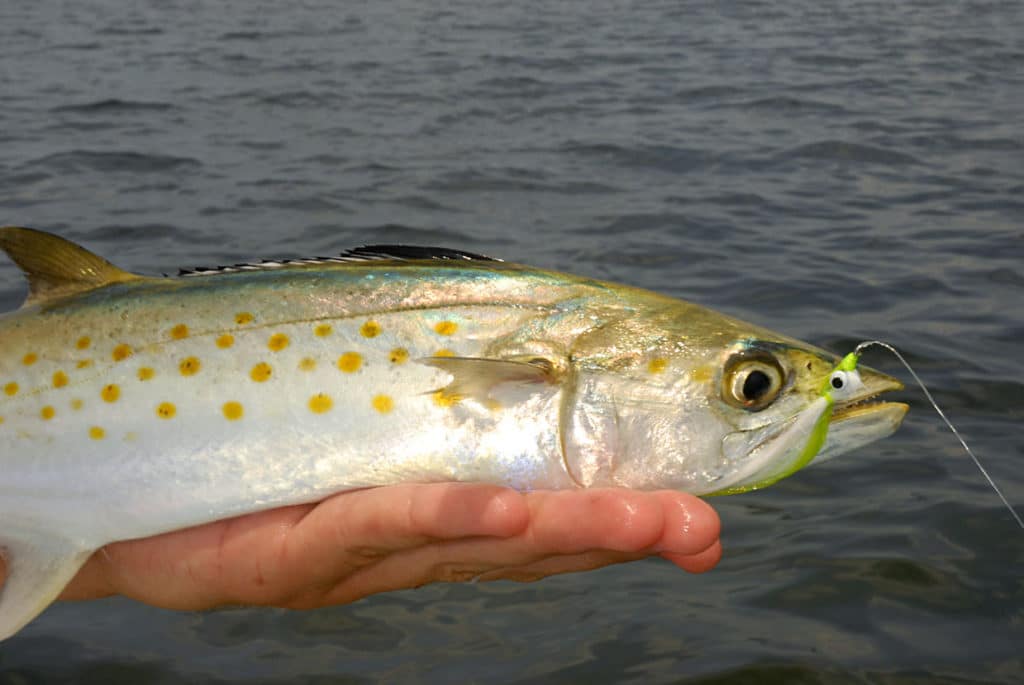
To find mackerel, Klopfer heads a mile or two into the Gulf of Mexico and looks for working birds or slicks, indicating mackerel feeding on small minnows. When he finds the fish, he grabs 7-foot, fast-action spinning rods and 3000-size reels, spooled with 10-pound-test monofilament. “I like monofilament because it stretches when a speeding Spanish strikes,” he explains.
Again, the right leader helps ensure success. Sharp-sighted Spanish can spot heavy leader or terminal tackle, but their sharp teeth slice through light line. “I go with 30-pound fluorocarbon and only lose a lure once in a while,” he says.
Lure choice comes down to availability. “I like a 3 ½-inch Bass Assassin soft plastic on a 1/4-ounce jighead,” he says. The soft-plastic bait can be easily replace after a Spanish attack. To target the fish on fly, Klopfer uses a 7-weight rod, intermediate or floating line, and a white D.T. Special fly. “
Chum Them Up
On the east coast of Florida, social-media celebrity Darcie, known by her nickname Darcizzle, fishes for a variety of species off Miami. When she’s targeting Spanish, Darcie starts the day with a stop by the tackle shop.
“First thing, I pick up the Spanish mackerel starter pack,” she says, laughing. This includes two blocks of glass-minnow chum and a 12-pack of Gulfstream Lures Flash Minnows.
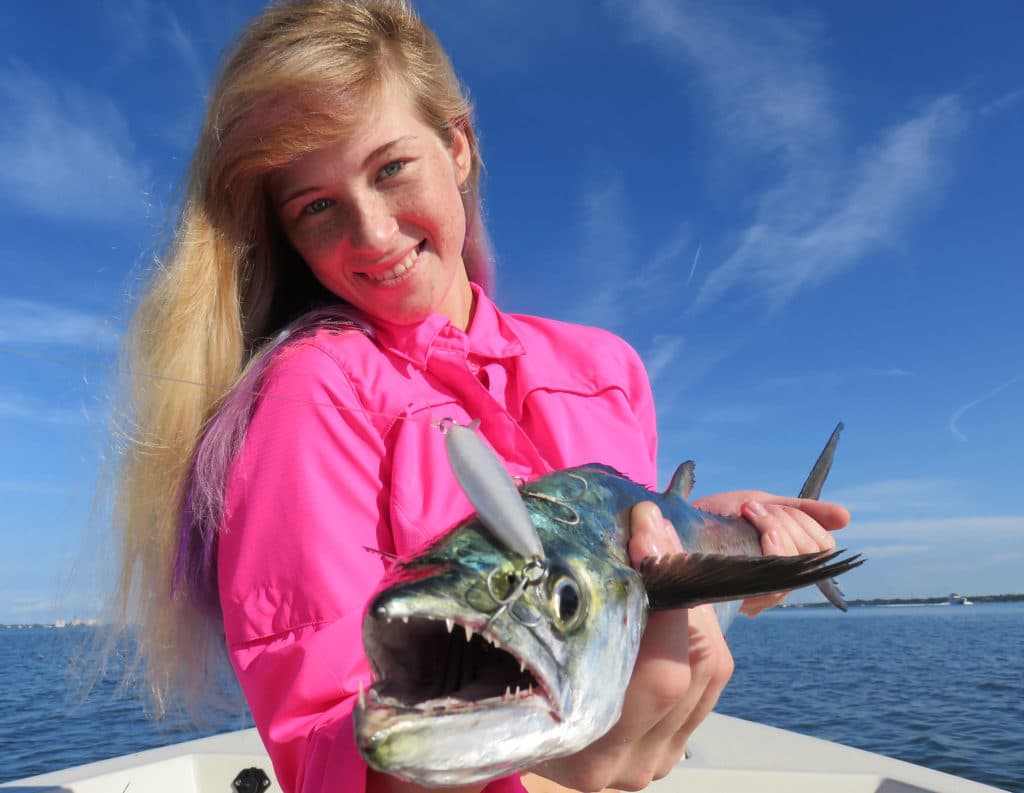
With their razor teeth, mackerel bite off a fair share of lures, “so it is a constant battle to use a heavy enough leader,” she says. Darcie starts with No. 4 single-strand wire. If the fish seem fickle, she bites the bullet and switches to fluorocarbon.
Darcie looks for Spanish at the inlet mouths and along the shore, but the best winter fishing is on a reef. “You can find the fish because there’ll be a lot of boats in the area,” she says. To target Spanish, Darcie uses a medium-action spinning rod with a 3000-size reel.
Once on the Spanish grounds, she starts chumming with the glass minnows. “I throw out a handful of glass minnows before every cast,” she says. Before long, the fish find the chum and the melee starts. “The only thing you can do wrong is not use enough chum,” she says.
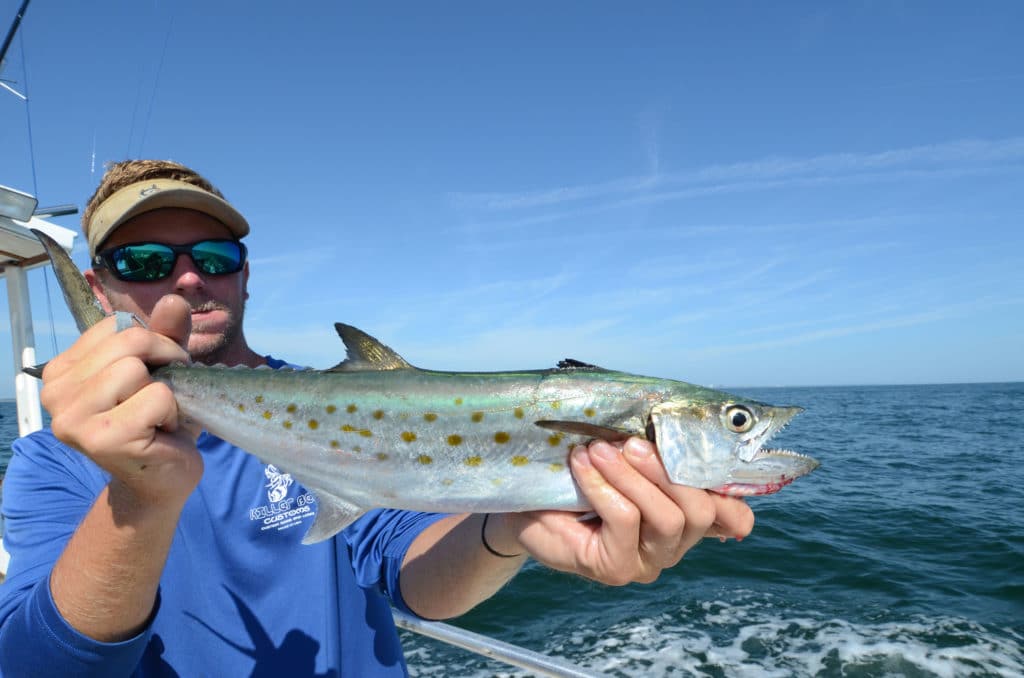
More Bites
Spanish mackerel range from the Gulf Coast to the mid-Atlantic. On the North Carolina coast, a few miles from the South Carolina state line, Capt. Jot Owens says the fish are a big part of his business and his clients like the challenge of hooking a speeding mackerel on light tackle.
After a lifetime fishing for macks, Owens has seen anglers make serious mistakes with light tackle. “You can’t work the lure too fast,” he says. To increase hookups, Owens recommends cranking hard on the reel and holding the rod tip low to the water.
Read Next: More Fishing and Boating Tips
“I’m looking for a reaction bite so the fastest lure gets the bite.” Recently, he started using a high-speed spinning reel with a 7-to-1 gear ratio to work the lure even faster.
Owens tries to stay as far as possible from feeding fish. That necessitates longer casts, which allow the lure to spend more time in the water. “The biggest mistake I see is anglers driving their boat through the school,” he says. Once the fish spook, the school might not reform.
Finicky and fast, Spanish mackerel deliver heart-thumping action, line-sizzling runs, and enough of a challenge to make any angler respetar el pescado (respect the fish) whether trolling, chumming, or sightcasting.



